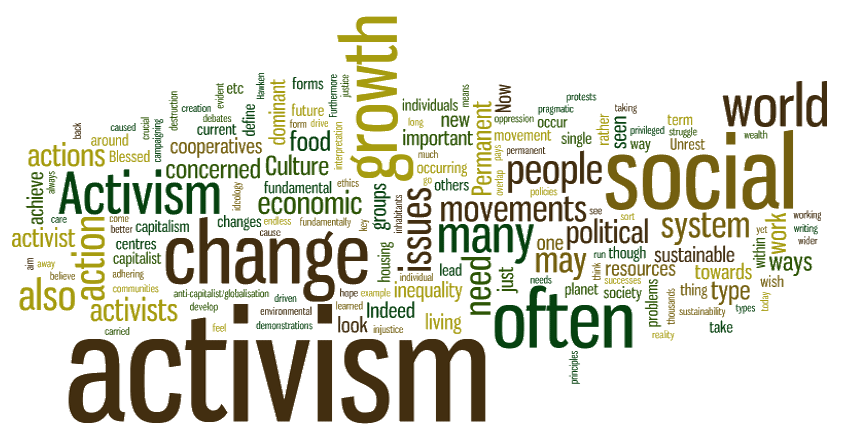“A dead thing can go with the stream, but only a living thing can go against it.” G.K. Chesterton
What is Activism?
Activism is quite simply taking action to effect social change; this can occur in a myriad of ways and in a variety of forms. Often it is concerned with ‘how to change the world’ through social, political, economic or environmental change. This can be led by individuals but is often done collectively through social movements.
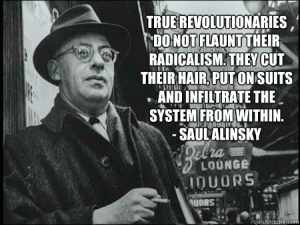 Activist or Activism?
Activist or Activism?
It’s not where you’re from; it’s not where you’re at: it’s what you do.
Many people can be classified as activists and many actions can be interpreted as activism, but this doesn’t mean that all activism is carried out by activists. The term activist itself is contentious, as what constitutes an activist and what actions can be defined as activism are often contested.
We at a Permanent Culture Now would prefer not to use the term ‘activist’ in the classical sense as it creates a division between those who define themselves as activists and those who carry out activism. We feel it is more important to look at the actions being undertaken rather than how individuals define themselves. W may not 100% agree with Saul Alinsky on the right but we think he definitely has a point. Indeed, as Andrew X states in his article Give Up Activism,
“The activist is a specialist or an expert in social change. To think of yourself as being an activist means to think of yourself as being somehow privileged or more advanced than others in your appreciation of the need for social change, in the knowledge of how to achieve it and as leading or being in the forefront of the practical struggle to create this change… Defining ourselves as activists’ means defining our actions as the ones which will bring about social change, thus disregarding the activity of thousands upon thousands of other non-activists. Activism is based upon this misconception that it is only activists that do social change.”
It is crucial to not fall into the trap of alienating oneself by doing this, as it can lead to a sense of delusion that you solely are the bringer of change, combined with a distancing of yourself from the wider population and also alienating those who may be supportive.
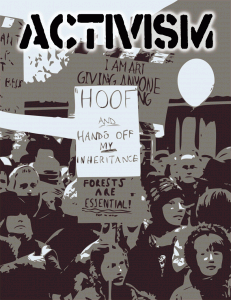 When viewing or considering becoming involved in activism, it pays to be realistic about what you hope to achieve and what impact you may have. Sometimes, activism can lead to misconceptions about the change you can help foster so it pays to remain grounded about what individual potential you may have. The reality is that activism is not about how people look or the clothes they wear: the sine qua non of activism is doing. When looking at activism in action, look not at how groups define themselves but rather, what they do as this is often much more informative and decisive.
When viewing or considering becoming involved in activism, it pays to be realistic about what you hope to achieve and what impact you may have. Sometimes, activism can lead to misconceptions about the change you can help foster so it pays to remain grounded about what individual potential you may have. The reality is that activism is not about how people look or the clothes they wear: the sine qua non of activism is doing. When looking at activism in action, look not at how groups define themselves but rather, what they do as this is often much more informative and decisive.
Furthermore, we at Permanent Culture Now would add that even though it is helpful to take an ideological position regarding where you situate yourself within the political landscape (e.g. socialist, anarchist, communist, etc.), you should be careful when adhering to such conceptual frameworks for they may blind you to other ways of seeing the world around you. Indeed, engaging in sterile debates concerning doctrinal position and/or interpretation can hinder and in some cases prevent positive social action occurring. Surely it is more productive to look at what we have in common rather than what we don’t as a basis for joint action? Pragmatism is key: you have to ask what is more important: engaging in debates about what is the correct interpretation of such and such philosopher or the person sat beside you willing and ready to engage in positive social action.
Different types of activism
Activism has three distinct strands that very often overlap and intersect with each other.
1) Demanding solutions to contemporary problems through the taking of oppositional stances to mainstream policies.
This is the type of campaigning activism that includes protests, strikes, demonstrations etc. They key to this type of activism is that it is demand-driven with the aim being a change in policy, practice or operations. This sort of action often takes the form of short-term actions, but can also be long-term sustained campaigns.
2) Undertaking activism which manifests itself through the creation of alternatives to the dominant system through the construction of new ways of social behaviour.
Key to this type of activism is the creation of new structures and alternatives within society, often with the hope that they will lead as an example which others will also imitate and develop. It is often concerned with ways of living and meeting people’s needs such as housing, food and education.
Examples of this would be housing and food cooperatives, social centres, worker cooperatives, new age travellers, squats etc. This sort of activism is often carried out by collectives of people over long periods of time, though this is not always the case. See the Alternative DiY section for more information on this type of activism.
3) Revolutionary activism that is concerned with fundamental change of society and its major institutions.
This type of activism seeks to fundamentally change the dominant system to a new way of living and is not particularly concerned with reforms and piecemeal changes in the long term.
It is not unusual for these types of activism to overlap and sometimes within the same campaign. For example, an anarchist group may wish to see the destruction of capitalism and will work towards that; they may also run social centres or food co-operatives and protest against changes to policies that currently affect their lives.
There are many who believe that capitalism is the main issue that dominates activism today and that it is the cause of many of the issues that groups campaign against. This can be seen as true depending upon your political leanings, although it would be hard to deny that the profit motive and the drive for endless growth have not impacted on the world and most of its inhabitants. If our aim is the overthrow of capitalism and its replacement by a more sustainable system, then this raises real questions of how society should be run whilst adhering to more equitable principles. Arguably, this may be the most important role for activism in the future.
‘The Blessed Unrest.’ Is there a social movement of movements?
So does activism have an impact on the world?
“Never doubt that a small group of committed people can change the world. Indeed, it is the only thing that ever has.” Margaret Mead, US anthropologist (1901 – 1978)
Paul Hawken highlights the scale of action that is occurring worldwide in his book Blessed Unrest where he estimates that there are over one-million groups working towards ecological sustainability and social justice in the world today. Hawken views this movement as a complex coalition of human organisations all working towards improving the world for the better. Many of these people struggle against oppression do not view themselves as activists or political, yet through their actions they clearly are fighting injustice and exploitation. Through writing his book he learned the following,
“Part of what I learned concerns an older quiescent history that is remerging, what poet Gary Snyder calls the great underground, a current of humanity that dates back to the Palaeolithic. Its lineage can be traced back to healers, priestesses, philosophers, monks, rabbis, poets and artists who speak for the planet, and other species, for interdependence, a life that courses under and through and around empires.” (p.5)
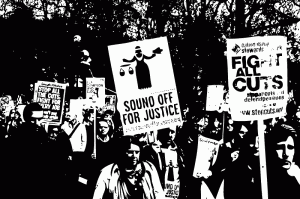 This movement is not always overtly political and can often be focused on single issues, but often these single issues do have a wider context linked to inequality and neo-liberal capitalist economics. This is not to say that all issues are explicitly caused by economic inequality, as other issues can also cause problems, but more and more it becomes evident that many of our problems come from inequality and its intensification caused by the capitalist system.
This movement is not always overtly political and can often be focused on single issues, but often these single issues do have a wider context linked to inequality and neo-liberal capitalist economics. This is not to say that all issues are explicitly caused by economic inequality, as other issues can also cause problems, but more and more it becomes evident that many of our problems come from inequality and its intensification caused by the capitalist system.
This realisation became more evident when we saw the rise of the anti-capitalist/globalisation movements of the early 2000s, where many single issue groups came together to question the economic system. More recently the occupy Wall Street campaigns (though not resolutely anti-capitalist) are also challenging the fundamental inequalities created by the current economic system and its massive concentration of wealth in the hands of the few.
There is a huge amount of activism that is occurring globally and around many issues, struggling against oppression and injustice on a local, international and global level. More and more these movements and individuals are making links with each other, as has been seen in the anti-capitalist/globalisation and other movements that feel a commonality. These movements do have successes and failures in what they wish to change, but what we can be sure of is that if they did not exist then there would definitely not be any successes.
Specific forms of activism / social movements
Activism can take many forms and can occur in various economic, political, social and work arenas. It can take the form direct action undertaking civil disobedience, protests, occupations, campaigning, boycotts and demonstrations through to more conventional activism such as lobbying, writing letters, internet activism, petitions and attending meetings.
There is also community activism which involves things such as setting up social centres, food cooperatives, housing cooperatives, building communities putting on events and promoting alternative ideas. In terms of the many issues that people in social movements are concerned with, they can be broadly classed as either environmental/ecological sustainability or social justice issues. Activism is varied and diverse, but its demands often have underlying universal themes of equality and respect.
Saul Alinsky and Rules for Radicals
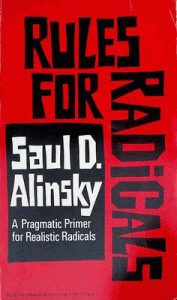 In term of techniques, people can learn a lot from Saul Alinsky’s book Rules for Radicals about grassroots community organising which looks at how to organise in your community. Obviously there are lots of other techniques, but these rules can also be applied to other tactics as well. We will be looking at other techniques in the future, but for now this will give you some food for thought.
In term of techniques, people can learn a lot from Saul Alinsky’s book Rules for Radicals about grassroots community organising which looks at how to organise in your community. Obviously there are lots of other techniques, but these rules can also be applied to other tactics as well. We will be looking at other techniques in the future, but for now this will give you some food for thought.
These are taken direct from Rules for Radicals and they tie into the following process Agitate + Aggravate + Educate + Organize.
Rule 1: Power is not only what you have, but what an opponent thinks you have. If your organization is small, hide your numbers in the dark and raise a din that will make everyone think you have many more people than you do.
Rule 2: Never go outside the experience of your people.
The result is confusion, fear, and retreat.
Rule 3: Whenever possible, go outside the experience of an opponent. Here you want to cause confusion, fear, and retreat.
Rule 4: Make opponents live up to their own book of rules. “You can kill them with this, for they can no more obey their own rules than the Christian church can live up to Christianity.”
Rule 5: Ridicule is man’s most potent weapon. It’s hard to counterattack ridicule, and it infuriates the opposition, which then reacts to your advantage.
Rule 6: A good tactic is one your people enjoy. “If your people aren’t having a ball doing it, there is something very wrong with the tactic.”
Rule 7: A tactic that drags on for too long becomes a drag. Commitment may become ritualistic as people turn to other issues.
Rule 8: Keep the pressure on. Use different tactics and actions and use all events of the period for your purpose. “The major premise for tactics is the development of operations that will maintain a constant pressure upon the opposition. It is this that will cause the opposition to react to your advantage.”
Rule 9: The threat is more terrifying than the thing itself. When Alinsky leaked word that large numbers of poor people were going to tie up the washrooms of O’Hare Airport, Chicago city authorities quickly agreed to act on a longstanding commitment to a ghetto organization. They imagined the mayhem as thousands of passengers poured off airplanes to discover every washroom occupied. Then they imagined the international embarrassment and the damage to the city’s reputation.
Rule 10: The price of a successful attack is a constructive alternative. Avoid being trapped by an opponent or an interviewer who says, “Okay, what would you do?”
Rule 11: Pick the target, freeze it, personalize it, polarize it. Don’t try to attack abstract corporations or bureaucracies. Identify a responsible individual. Ignore attempts to shift or spread the blame.
According to Alinsky, the main job of the organizer is to bait an opponent into reacting. “The enemy properly goaded and guided in his reaction will be your major strength.”
How to Change the World and achieve a Permanent Culture Now
 Activism is a tool for achieving the world we want and need and what guides us personally at Permanent Culture Now is the ethics of permaculture:
Activism is a tool for achieving the world we want and need and what guides us personally at Permanent Culture Now is the ethics of permaculture:
- Earth care
- People care
- Fair shares
We do not subscribe to one ideology and see that many ideologies have useful elements, but fundamentally we believe it is about being pragmatic. These ethics are pragmatic in as much as they concern developing systems where the planet and its inhabitants achieve and develop a state of well-being through using resources in a balanced way. Furthermore, resources should not be frittered away in the name of personal gain and individual profit which ultimately results in the depletion and destruction of our natural eco systems. This ultimately leads us to the need for activism.
Activism often challenges the current dominant ideology or is driven by principles that counter its negative effects. This makes it very important for establishing a Permanent Culture, as the barriers that we often come up against are protecting the interests and needs of the dominant capitalist system and the ruling elite. These interests need to be challenged in order for change to occur and activism is one way of doing this.
We have constantly been told that we need growth and that growth benefits us, yet in reality growth has disproportionately benefited the ruling elites and their corporations. Since the 1970s, we have seen no real-term increase in wages and we work longer hours with both parents often having to work. Indeed, the privatisation of our most essential resources has driven up costs of food, energy and transport which are the basics that we need to survive. That’s just in privileged countries. Other parts of the world have seen huge social and environmental devastation brought about by the relentless pursuit of growth. It would be unfair to say that this growth hasn’t also bought with it benefits for many people, but often at the cost of others and the environment. Even if this growth did not result in vast inequality it would still be unsustainable as we only have one planet and one planet’s oil reserves.
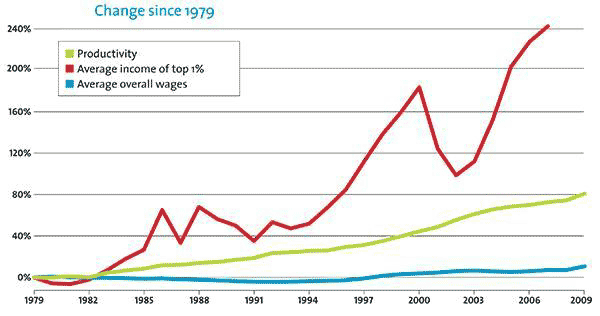 The battle for a permanent culture is not going to be easy as we cannot have a permanent culture without redistributing wealth and resources. This will not be achieved through minor concessions as there has to be fundamental shift away from the dynamics of Capitalism and its endless drive for growth through mass consumerism. It is absolutely crucial that this changes because it is the core obstacle to a more sustainable and just future. We want just not economic unbridled growth, but growth in sustainable ways of living, growth in the well-being of people, growth in communities, growth in equality and growth in meaningful work. The list goes on.
The battle for a permanent culture is not going to be easy as we cannot have a permanent culture without redistributing wealth and resources. This will not be achieved through minor concessions as there has to be fundamental shift away from the dynamics of Capitalism and its endless drive for growth through mass consumerism. It is absolutely crucial that this changes because it is the core obstacle to a more sustainable and just future. We want just not economic unbridled growth, but growth in sustainable ways of living, growth in the well-being of people, growth in communities, growth in equality and growth in meaningful work. The list goes on.
So if we wish to make the world a better place we will need to be active in that dynamic, utilising all forms of activism to move the world towards a sustainable and just future.
References:
Blessed Unrest – Hawken
Give up Activism – Andrew X

